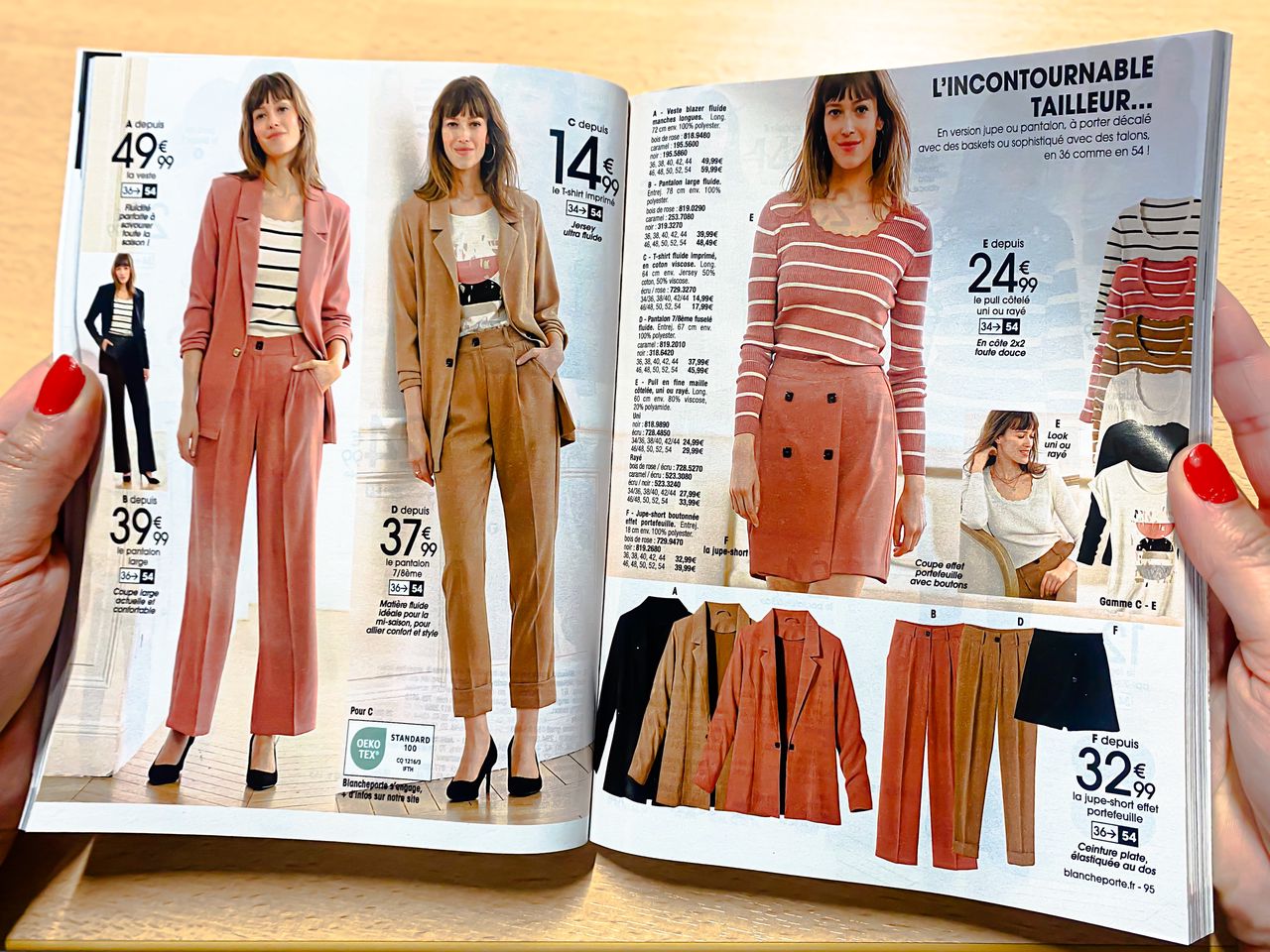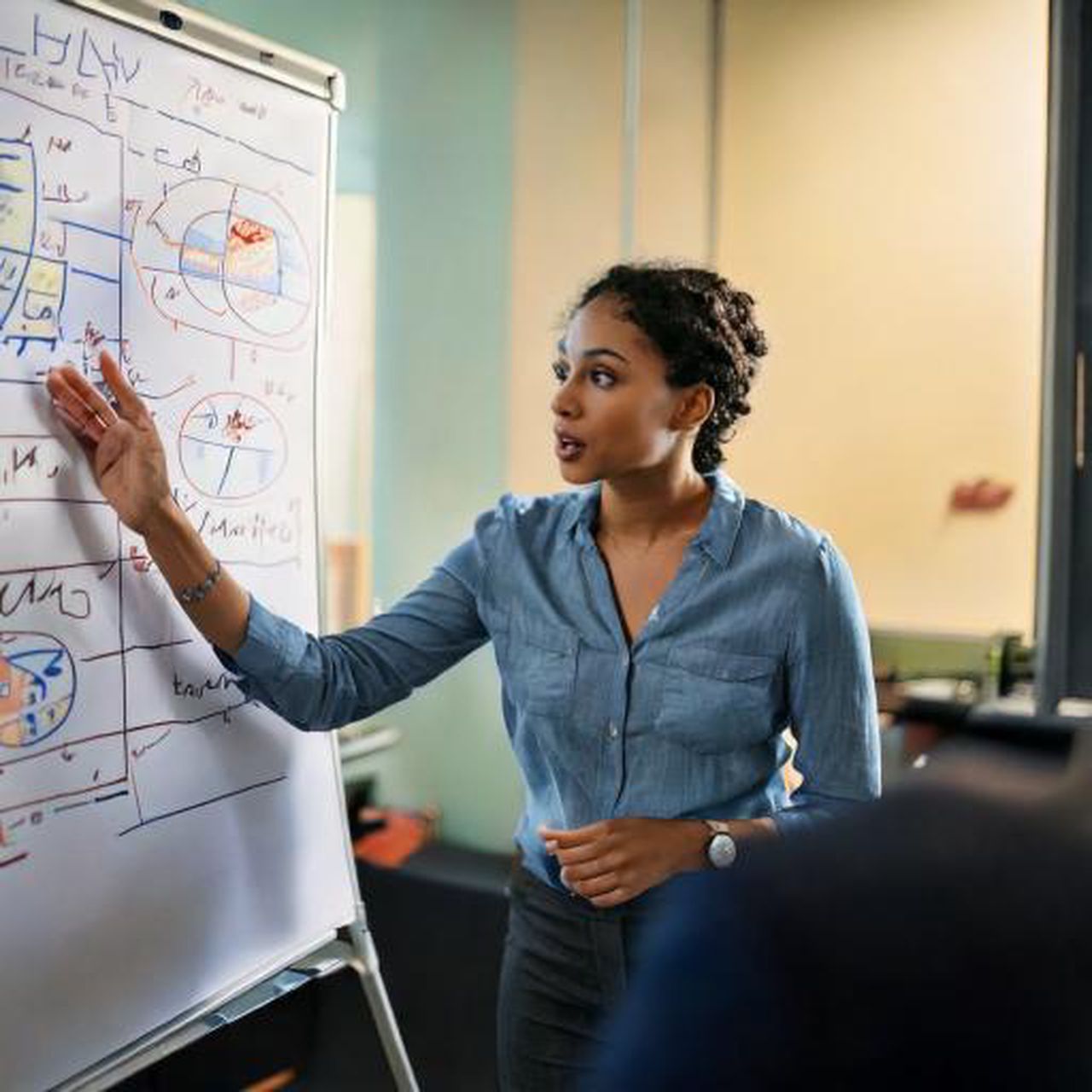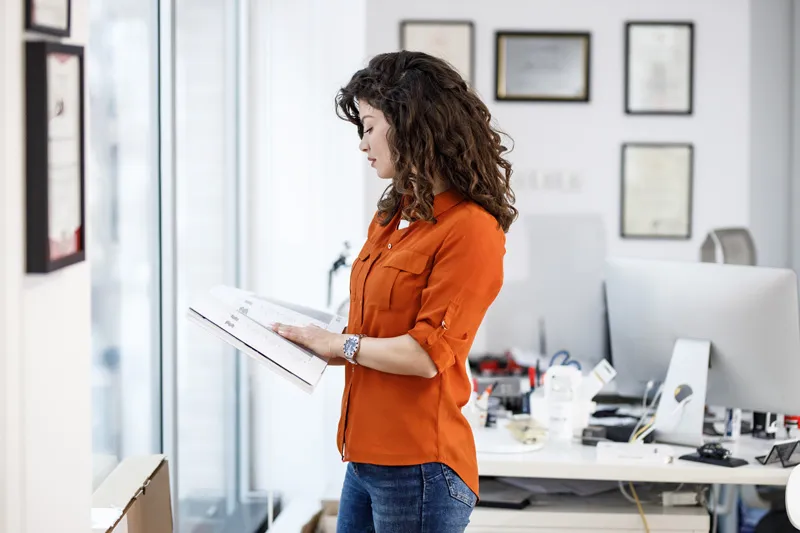Context
In the context of automatic document generation, translation simply consists of re-generating the document from the target language data before performing layout checks.
The presence of formal criteria makes it possible to associate the data with the corresponding formatting attributes in the layout. The data of a product sheet structured in a database can thus be managed independently of the publication channel 1.
In commercial communication such as brochures, for example, the physical and technical characteristics of the products are not the main focus. The arguments will seek to create emotion, insist on a reason for the brand’s existence, and thus present themselves differently depending on the context.
In this situation, how can we industrialize the translation of so-called “creative” documents, created with information units organized according to a presentation scenario and not around the attributes (technical, functional, etc.) of the products?
Creative documents
Often rich from a graphic point of view, these documents are elaborated by leaving a lot of room for creative freedom on the basis of decisions relating more to the formatting than to the content: location of text headings, images, the choice of highlighting a particular part of a paragraph, etc. All these choices are difficult to formalize.
The structuring of content, i.e. the construction of a database allowing the automatic generation of documents in different languages, is certainly possible. This requires the identification, for each new source document, of all the information units associated with the formatting attributes in order to be able to reproduce the layout.
Is it relevant to make the effort to define a structure that will allow the automation of translation injection? Considering that the lifetime of this kind of document is often short-lived since it is subject to fashion effects, the answer is often no. How to proceed?
What about directly translating the document?
J2S has a different approach. With Simple Workspace, translators and graphic designers work in a collaborative process: the studio uploads the source InDesign document to the platform and makes it available to the translators.
The magic happens: the document is analyzed and texts and images are automatically identified.
After choosing the target language (including those with Asian character sets or that read from right to left), the translator sees the document pages ready to be localized in his or her web browser. He can then choose a content area to enter his translation, with the source document text always present as a reference. When the translation is validated, the page preview is instantly updated, because nothing beats proofreading your work in the context of the page: What You See Is What You Print!
Note: the areas to be translated can be right-clicked to prevent the translator from being tempted to translate the well-known “Just do it”…
The studio can rest easy: the translator can only act on the content and not on the formatting.
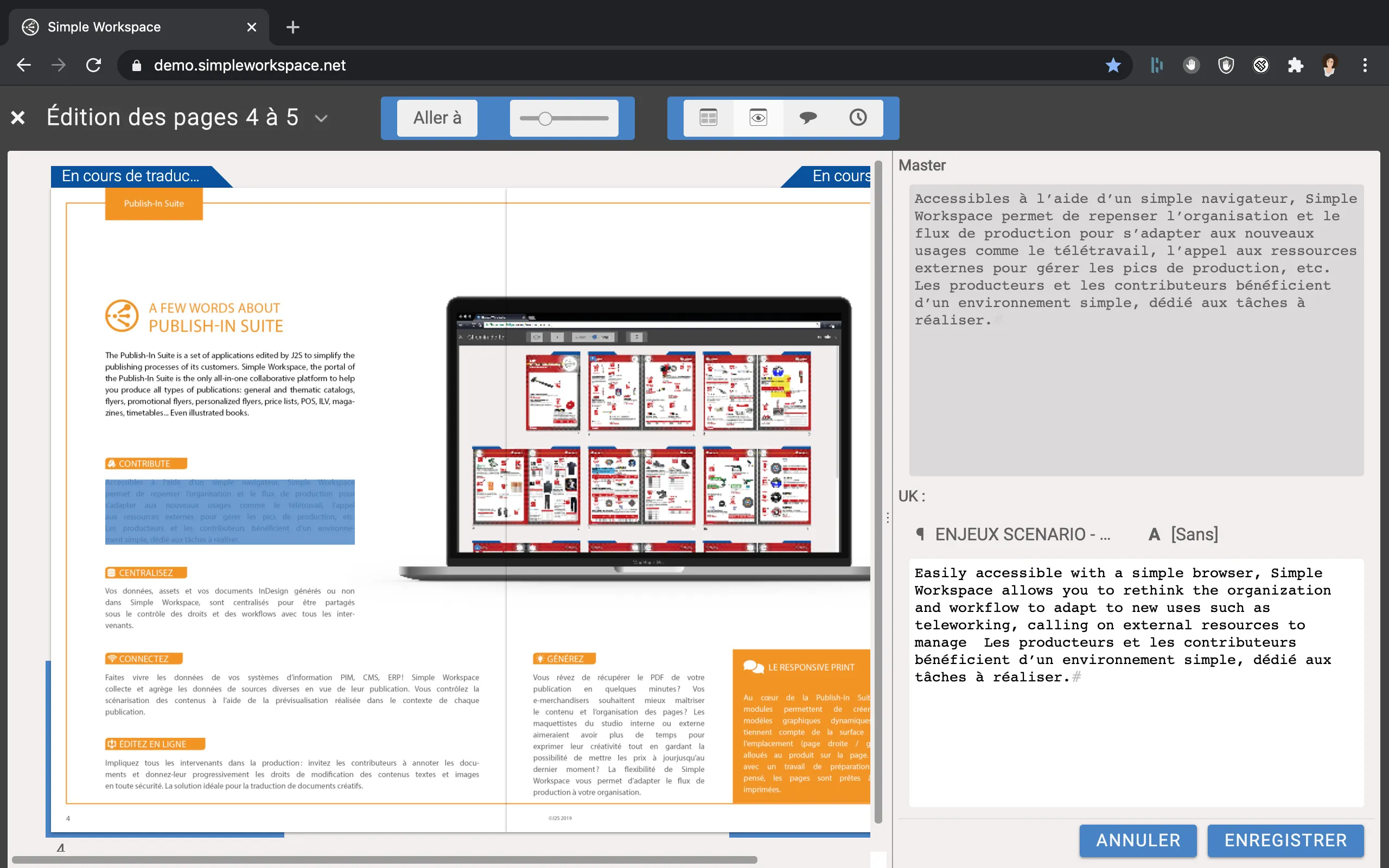
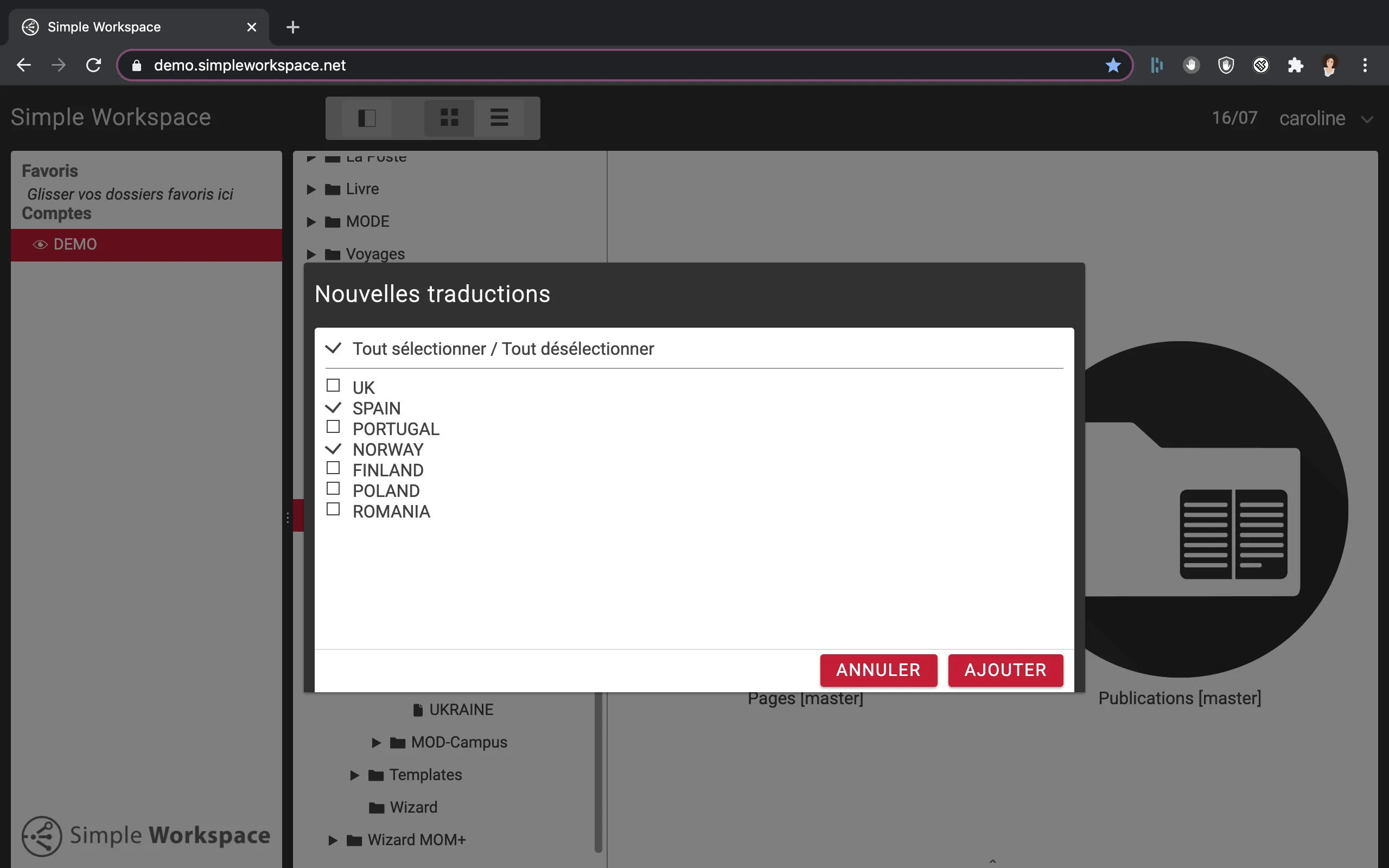
Excel is the key to this process
For some parts of the document, the process can be even more industrialized. A workflow action can activate the export of the content of the InDesign pages into an Excel file. This allows translation agencies to use their own tools, often with translation memories, to speed up their work and reduce costs.
Once the file has been translated, the data is imported back into the document. Translations can then be validated in the context of the layout.
What about images?
From a localization rather than a translation perspective, the studio can entrust the choice of visuals to local agencies. Indeed, some countries prefer colors rather than others, whereas in the UK, our it might be more common to see an image of a car with the steering wheel on the right, etc.
The studio uploads the quality-controlled images to Simple Workspace’s integrated DAM.
The assigned market manager will be able to select the image shown on the page and choose their preferred visual to replace the original image. As with text, the page preview is instantly updated.
Additional feature: for more control, it is possible to filter the choice of visuals.
Users only see the visuals associated with a page and not all the assets in the DAM.
If you also wish to give more editorial flexibility to translators within the framework of your graphic charter, please contact us !
Richard Loubéjac,
Co-founder of J2S

Please take a look at the article on “ Responsive Print ” for an illustration of the automation capabilities provided by J2S. ↩︎
